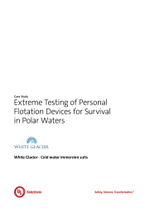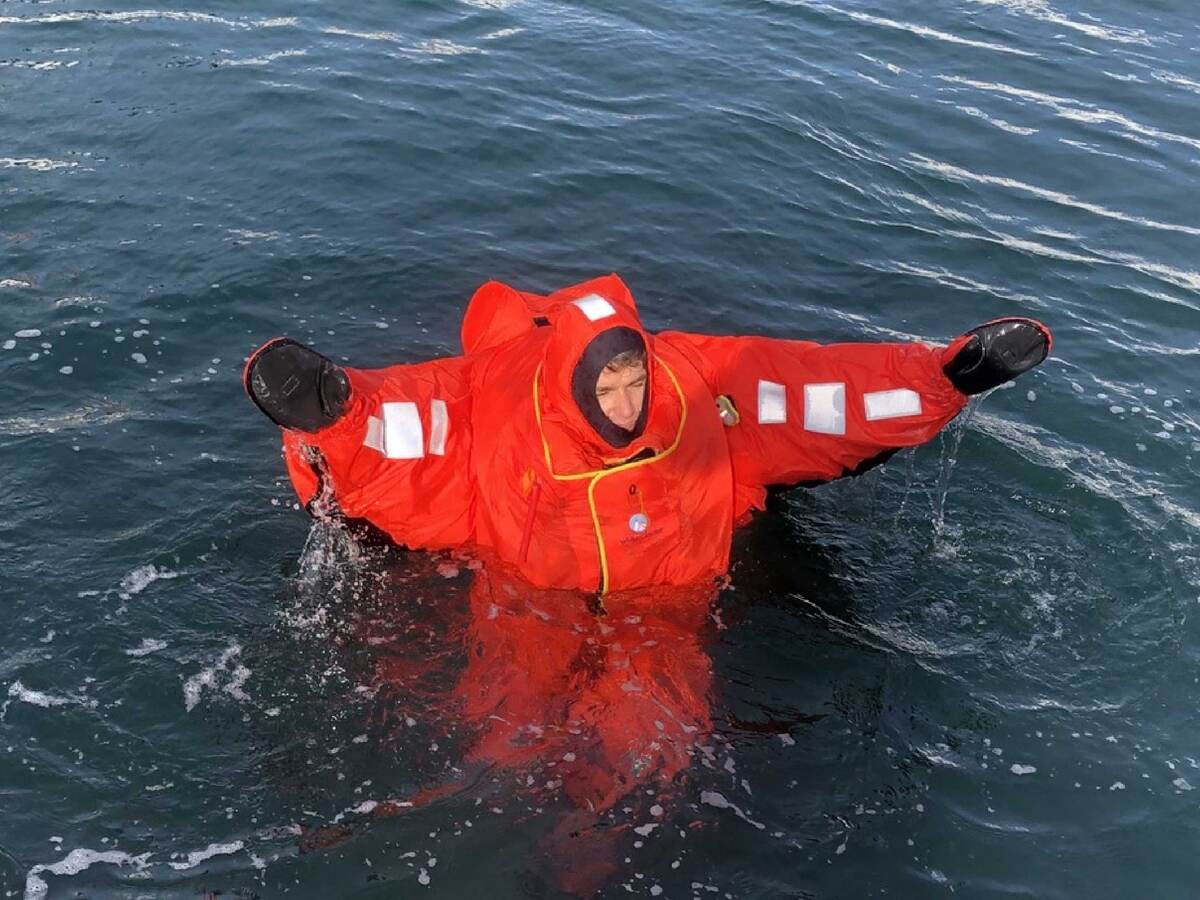
White Glacier Case Study
UL Solutions partnered with White Glacier on meeting the immersion suit survivability standards and helping increase survival rates under the most challenging conditions.

Emergency protective immersion survival suits are required on all sea vessels traveling in waters of polar regions. The suits are worn specifically to remain afloat and survive emergencies on high seas. These suits have traditionally been made of neoprene fabric for floating and for fire protection, and they must cover a person’s entire body without exposing any part to the water. The International Convention for the Safety of Life at Sea (SOLAS) regulations state that each person on board a ship must have their own personal immersion suit.
White Glacier, a leading provider of immersion survival suits, designed their next-generation Arctic 10+ (A10+) immersion survival suit to exceed traditional neoprene fabric in buoyancy and thermal protection. Their thermal protective layer provides a much higher CLO value (warmth) than can be obtained by neoprene or other types of materials currently used in these suits. All three suit layers are fire retardant, allowing the subject to escape through flames. The A10+ acts as a life raft in the water and a personal habitat on ice or land, protecting users against the elements for a minimum of five days.
It was essential to certify the A10+ in the three major markets regulated by the U.S. Coast Guard (USCG), Transport Canada and the EU Marine Equipment Directive (MED). After consulting with the USCG and other regulatory bodies to understand the requirements for placing a product on the market, White Glacier began its search for an acceptable certification body to provide testing. White Glacier chose UL Solutions because of its global leadership, convenient locations and the ability to provide support in multiple languages.
It would be challenging for White Glacier to displace the traditional neoprene suits if the A10+ was not certified, even with the A10+’s advanced technology for protection from hyperthermia and fire.
Their A10+ was so innovative that their testing and certification process would likely meet some unknown obstacles. White Glacier needed a testing, verification and certification partner that could address obstacles that can typically arise with untested technologies.
Added to White Glacier’s challenges was the need to complete certification in time to meet delivery requirements for an order of 600 suits from Ponant for its luxury ships operating in the Arctic and Antarctic. White Glacier needed a certification partner with extensive experience meeting the demanding testing deadlines common in a competitive marketplace.
Complete this short form to read the complete case study and to learn how UL Solutions helped White Glacier.

White Glacier Case Study